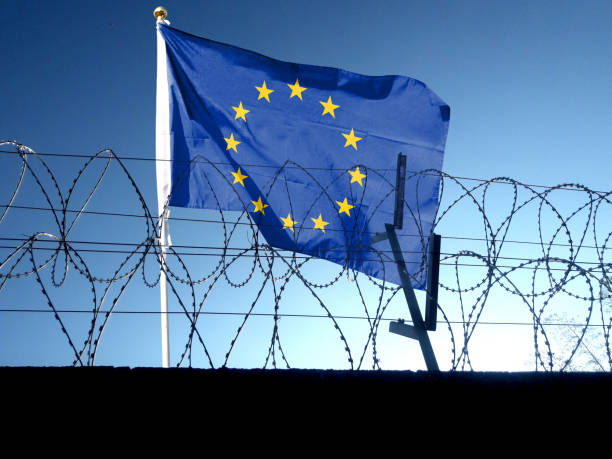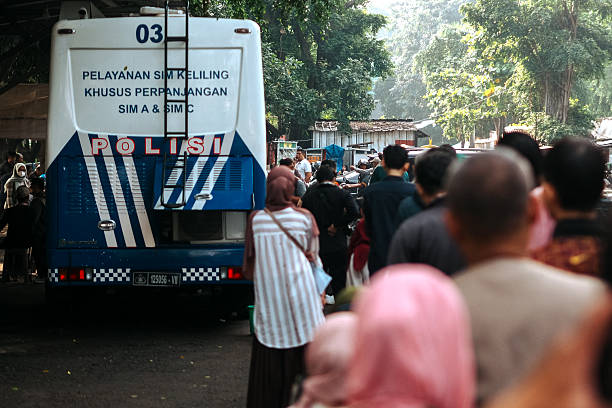
As European Union (EU) countries push for billions more in migration control funds in their next long-term budget, new numbers showed that more migrants were sent back to non-EU countries in early 2025.
At the same time, some EU nations want Brussels to tighten security along the eastern border because of rising safety risks and ongoing humanitarian problems.
EU leaders seek migration budget boost
EU countries are pushing for much more money to manage migration in the next long-term budget from 2028 to 2034.
A document shared by the Polish EU Council Presidency on June 12th showed that governments want to spend more on border security, deportations, and agreements with non-EU countries.
The paper, which the Strategic Committee on Immigration, Frontiers and Asylum discussed, asked for “new sources of funding” for working with other countries and a stronger “Team Europe” approach to coordinate migration spending.
It also suggested going beyond the current €80 billion NDICI–Global Europe fund, where migration already takes up 14% of the budget, higher than the 10% target.
In simple terms, Europe wants more money for fences, deals, and forced returns.
Rights groups warn of abuses
The effort to increase Europe’s migration budget comes as new evidence shows human rights abuses. Critics have pointed to violent border practices, secret deals with authoritarian governments, and digital surveillance aimed at migrants.
Earlier in June, 12 members of the #ProtectNotSurveil coalition signed an open letter saying a new deportation rule would “violate people’s rights” and help spread extremist ideas.
At the same time, documents from advocacy groups showed that the EU pressures other countries to tighten their own migration controls.
These policies risk shifting Europe’s migration problems elsewhere while ignoring human rights.
Migrant returns on the rise
As Brussels discusses future budgets, migrant returns are moving forward at a steady pace.
In the first three months of 2025, about 29,000 people were sent back to non-EU countries after being ordered to leave an EU country. This was a 6% increase from the same time last year.
Eurostat data showed that 123,905 non-EU citizens got orders to leave, an 18% rise compared to early 2024. Most people returned came from Georgia, Syria, and Albania.
France, Germany, and Cyprus reported the highest numbers of returns.
However, compared to the last quarter of 2024, returns went down slightly by about 4%.

Eastern borders demand bigger spotlight
Leaders along Europe’s eastern borders also want more attention and funding. On June 20th, the presidents of Lithuania, Estonia, Latvia, and Poland asked EU officials to support stronger defenses against Russia’s influence and use of migration.
They pointed to two key projects — the “Baltic Defence Line” and the “Eastern Shield” — to protect the region’s vulnerable borders.
“Migrants are being instrumentalized as a weapon,” warned Lithuanian President Gitanas Nausėda, stressing that Russia is testing Europe’s unity and values.
Children left behind
In another part of the migration debate, Save the Children raised concerns about unaccompanied minors stuck at Europe’s borders.
A report released on June 16th described children arriving at the Poland-Belarus border face suspicion, violent pushbacks, and little consistent help from authorities.
“There is no institution that looks after them from start to finish,” said Celina Kretkowska–Adamowicz from Save the Children Poland, warning that the system fails the most vulnerable.
A broader study by Save the Children found similar problems in Greece, Italy, Spain, and Finland. Children spoke about dangerous journeys, border violence, and policies that treat them as security threats instead of refugees.
“No child should bear the consequences of deterrence policies,” added Save the Children’s Willy Bergogné.
A tighter welcome for travelers
The EU’s push for more migration control funding and rising deportation orders point to stricter border measures that could affect both short-term and long-term visitors.
More spending on deportations and border security could mean tougher checks for people using the European Travel Information and Authorization System (ETIAS) or applying for Schengen visas, possibly leading to longer waits or more refusals even for legitimate travelers.
As ETIAS gets closer to launching, these changes may combine to make Europe’s travel environment more focused on security and less welcoming.

Mounting pressures on migrants
For migrants, the news means a more uncertain future. Bigger EU deportation budgets, more orders to leave, and tougher measures on eastern borders point to less protection and faster removals.
Migrants from countries like Algeria, Morocco, and Syria, who already face high return rates, may see stricter enforcement, fewer safeguards, and more risk while traveling or after arrival.
An enduring security mindset
EU immigration policy appears firmly on course to embed migration control as a cornerstone of future budgets and legislation.
Calls for funding external partnerships, expanded deportations, and eastern border fortifications show member states aligning migration with security priorities.
This trajectory, if sustained, could institutionalize externalization deals and fast-track returns, hardening the EU’s stance toward migration while complicating efforts to balance humanitarian protections with enforcement.
Europe at a crossroads
As Europe ramps up returns, tightens eastern border controls, and demands bigger migration budgets, the continent stands at a pivotal moment between security priorities and human rights responsibilities.
The coming years will test how far EU leaders are willing to go to externalize migration while upholding their legal and moral obligations. Ultimately, the future of migration policy may define not only Europe’s borders, but its values.
